When you get the “A device attached to the system is not functioning” error, it means Windows can’t communicate properly and transfer data.
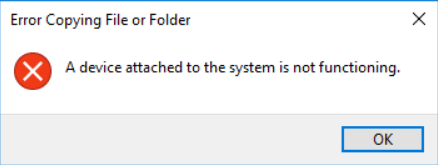
This error can occur because of many reasons, the most common ones are the following:
- The device is improperly connected
- The device drivers are faulty or incompatible
- The USB port is not functioning
- The data transfer process is being hampered by another USB device
You can encounter this error message when you transfer data between two hard drives. Additionally, the error can occur while transferring media/data from tablets, smartphones, cameras, or USB’s.
You don’t need to worry much if you get this error. It is a common one and easily resolvable.
Here are some solutions.
Solution 1 – Use a different USB port
In case the connection between USB Storage and the PC is improper, this error can occur. The connector might be improperly connected to the USB port. It is also possible the cable might be defective.
First try to reconnect the device. In case you use a cable, ensure the cable is perfectly usable. Otherwise, use another cable. You should also plug the device into a different USB port.
In case other USB devices are connected with your PC, you should remove them all, and then reconnect the device with which you were getting the said error.
Solution 2 – Restart the computer
Many people who received this error report that restarting Windows helped them fixed the problem. Therefore, you should give this step a go.
Maybe your computer has just installed some programs and needs a reboot. Or perhaps some modules having incorrect configurations are present. When you install Windows update, you should always reboot Windows so that the changes can take effect.
Before you click the restart button, detach the USB device. Once the computer has restarted properly, connect the device. See if the issue is resolved. If not, move on to the next step.
Solution 3 – Format the Device
You can also get this error when the device is improperly formatted. By improper formatting we mean that the blocks/sectors are not correctly allocated in the storage device. This in turn might cause the error.
Here are the steps to follow to format the device.
- Open File Explorer by pressing Windows + E on your keyboard
- Click This PC (located in navigation pane on the left-hand side)
- Right-click the connected USB device and click Format
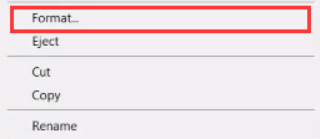
- Now a new pop-up window will appear showing all the settings. Simply click the Start button at the bottom of this window in case you don’t know which settings to select
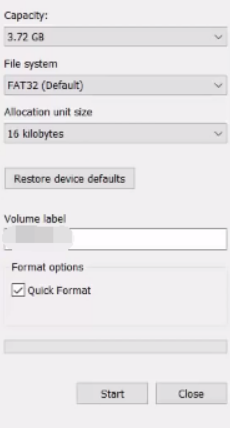
- Now Windows will format the device. Once formatting is complete, try to use the USB device. If the problem still persists, move on to the fourth solution
Solution 4 – Run SFC and DISM Commands
In case your system has some corrupt files, then too you can get this error. That’s why we recommend you to run the SFC command. If no errors are shown, then you should consider running DISM command.
SFC stands for System File Checker. This is an inbuilt utility in Windows that scans your computer to locate corrupt files. With help of this tool, you can check if a problem is because of corrupt files.
To run SFC, perform the steps given below.
- Open the Run dialog box by pressing Windows + R on your keyboard
- Now type taskmgr and click the OK button or press the Enter key
- Click the File menu and then click Run new task
- In dialogue box, type powershell. Now check the box before Create this task with administrative privileges
- In Windows PowerShell window, you should type sfc/scannow and then press the Enter key
- Windows will now scan all system files for corrupt phases. The whole process make take a little time

- If the SFC scan detected an error and fixed it, restart Windows and then reconnect the USB device
- If you get an error message that states that an error was found but Windows couldn’t fit it, we recommend you run the DISM command. To do this, simply type DISM /Online /Cleanup-Image /RestoreHealth in PowerShell window. This process, just like SFC, can take a bit of time, depending on the speed of your Internet connection. You shouldn’t cancel the process prematurely

If the error is still not fixed, we recommend you to update device drivers.
Solution 5 – Update Device Drivers
Outdated device drivers can also cause this error. When device drivers are outdated, the computer can find it difficult to transfer data.
In such a case, you should update your device drivers. You can update your drivers using the Device Manager utility or a reputable driver update tool.
We have listed both the methods, but we recommend you use a driver update tool, particularly if you are not familiar with Device Manager.
Update device drivers using Device Manager
You update drivers through Device Manager in two ways. You can ask Windows to automatically install the available driver or you can go to the manufacturer’s website, download the latest driver and update them.
Let’s see both the methods.
Let Windows Install the Default Driver
Here are the steps to follow.
- Press Win + R keys on your keyboard to launch the Run dialog box
- Type msc and press Enter to open the Device Manager window
- Browse to the device with which you are getting the said error, click Update driver
- Click Browse my computer for driver software (the second option in the list)
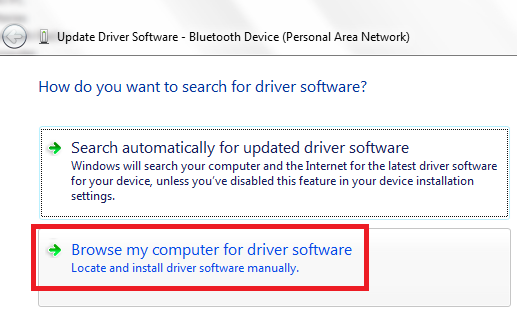
- Click the Next button
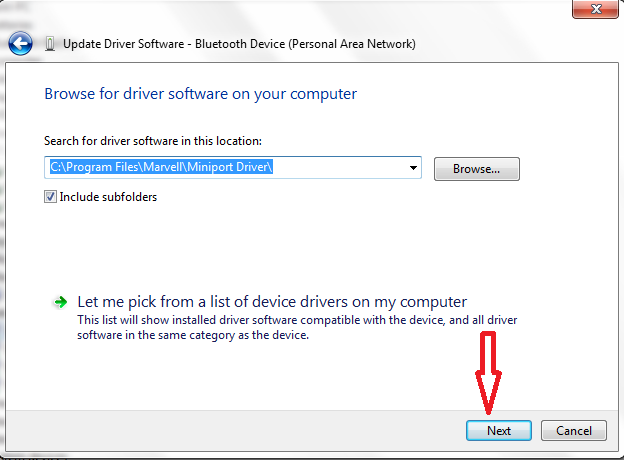
- Windows will automatically install the generic driver
Download the Latest Driver from the Manufacturer’s Website
It is possible that Windows doesn’t have the latest driver for the device. In such a case, you should go to the manufacturer’s website, and manually download the latest driver.
Save the driver file on your desktop or another convenient location and then use the Device Manager to update the driver.
Here are the steps to follow.
- Press Win + R keys on your keyboard to launch the Run dialog box
- Type devmgmt.msc and press Enter to open the Device Manager window
- Browse to the device with which you are getting the said error, click Update driver
- Click Browse my computer for driver software (the second option in the list)
- Now browse to the location where you’ve saved the driver file and then click the Next button to install the driver
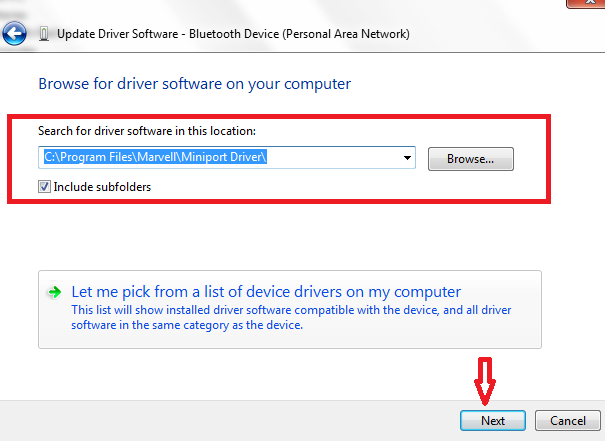
Update device driver automatically
You can also update a device driver automatically at a click of the button using a driver update tool.
Automatic driver update tools offer many benefits, the most important ones being:
- You can update device drivers automatically
- The software scans and updates all outdated or missing drivers at one go
- The tool picks the right drivers for your device and operating system, so you won’t have to worry about installing an incorrect driver by mistake
- Automatic driver updates are 100% safe
Driver Updater is one of the best driver update tools out there. Outbyte Driver Updater will give you access to a database of over 1 million drivers. It will regularly scan your PC, suggesting new driver versions to install. Driver Updater contains drivers for a variety of Windows devices. With just one click, you can update drivers in your system.
Step 1
Click here to Install and launch the app
Step 2
Scan all devices
Step 3
Install or update drivers automatically

Leave a Reply